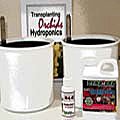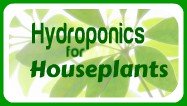Orchid Care -
Orchid Fertilizers - Technical Stuff
There's a lot of information on a fertilizer package. Fortunately, there are standards manufacturers must follow so understanding what's inside and comparing different products isn't difficult.
Macro-Nutrients and Micro-Nutrients
Nutritional elements are divided into 2 categories; macro-nutrients and micro-nutrients. Plants need large amounts of some elements (macro-nutrients) and only trace amounts of of others (micro-nutrients).
Macro-nutrients - All fertilizers contain 3 main elements; Nitrogen (N), Phosphorus (P), and Potash (K). These elements are called macro-nutrients. The 3 numbers on the front of the package describe the percentage of how much of these elements are inside. So if your fertilizer package has 7-9-5 on the front panel, it contains 7% nitrogen, 9% Phosphorus, and 5% Potash.
Micro-nutrients. Micro-nutrients, or trace elements make up the remaining 10 elements needed for a complete nutritional diet. Fertilizers will always contain the 3 main elements (or macro-nutrients), but many skimp on micro-nutrients to cut costs (look on the back of the package.)
Hydroponic Advantage: Hydroponics never relies on the growing material for any nutritional value. Hydroponic fertilizers always contain all 13 elements needed for a complete, balanced nutrition.
How Can Nutrients with Lower Numbers Work Better?
It all has to do with the purity of the chemicals, not the amount. Many nutrients are made from low grade minerals which are much cheaper (1/4 the price!). Low grade minerals contain filler elements that your plants cannot use - not good for orchids.
In nature, orchids are designed to quickly absorb anything that comes their way. The roots act like a sponge but they're sensitive to harsh chemicals. Their nutrient supply is pure and doesn't contain cheap chemical fillers.
Why jeapordize your plant's health with cheap fertilizer that's mostly filler?
Hydroponic Advantage: Fertilizers designed for hydroponics use quality ingredients because hydroponics delivers the nutrients directly to the plant's roots - without the soil getting in the way.
Macro Nutrients |
|
| Nitrogen (N) | Major factor in leaf and stem growth. |
| Phosphorus (P) | Necessary for photosyntesis. Essential for flowering |
| Potassium (K) | Helps water absorption and improves physical sturdiness |
Micro Nutrients |
|
| Sulfur (S) | Essential element for producing chlorophyll |
| Magnesium (Mg) | Necessary ingredient to produce carbohydrates, sugars, and fats. |
| Calcium (Ca) | Builds stronger cell walls and controls water content in cells |
| Iron (Fe) | Important for enzymes and synthesis of chlorophyll |
| Manganese(Mn) | Involved in enzyme activity for photosynthesis |
| Boron (B) | Helps build cell walls and aids in transfering calcium and sugars between plant parts |
| Zinc (Zn) | Component of enzymes and esential to carbohydrate and protein synthesis |
| Copper (Cu) | Part of the enzymes that use carbohydrates and proteins at the roots |
| Molybdenum (Mo) | Crtitical component that converts nitrates to ammonia. Plant growthstops without it. |
| Chlorine (CI) | Involved in osmosis - taking up mineral elements and photosynthesis |
| Nickel (Ni) | Required for iron absorption |
| Sodium(Na) | Involved in water movement in plant |
| Cobalt (Co) | Required for nitrogen fixation |
| Silicon (Si) | Produces stronger cell walls - makes plant more dorught and heat tolerant. |



